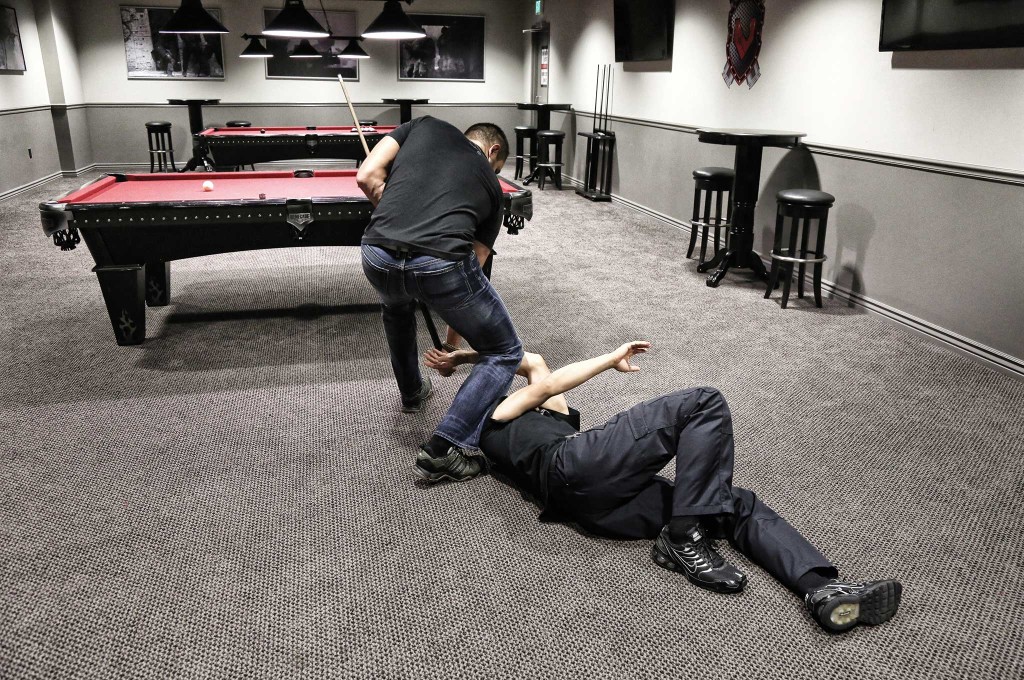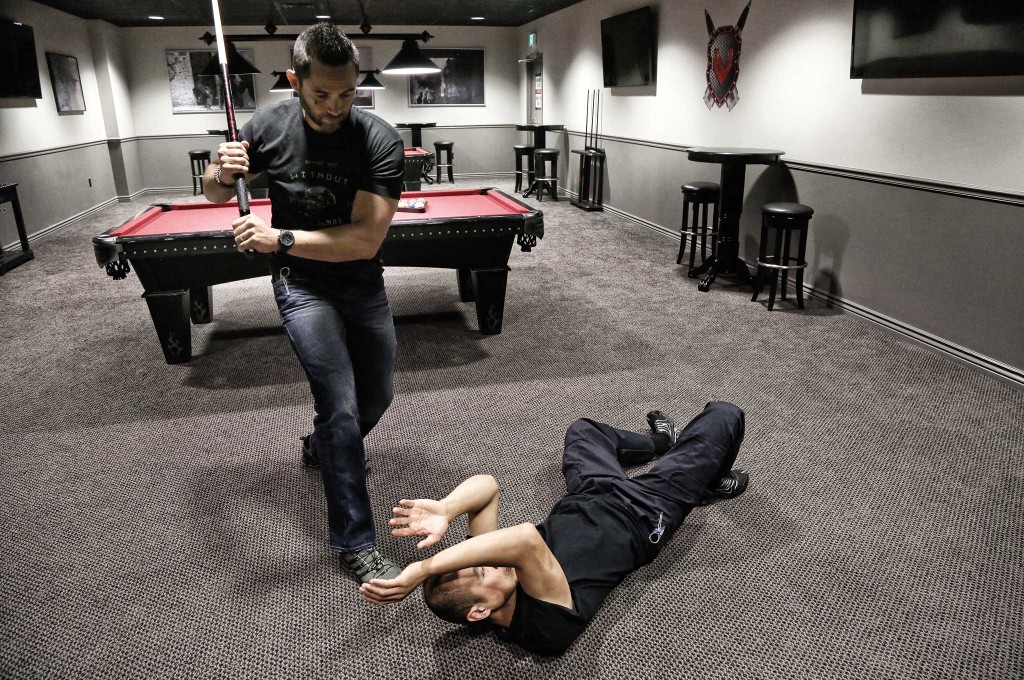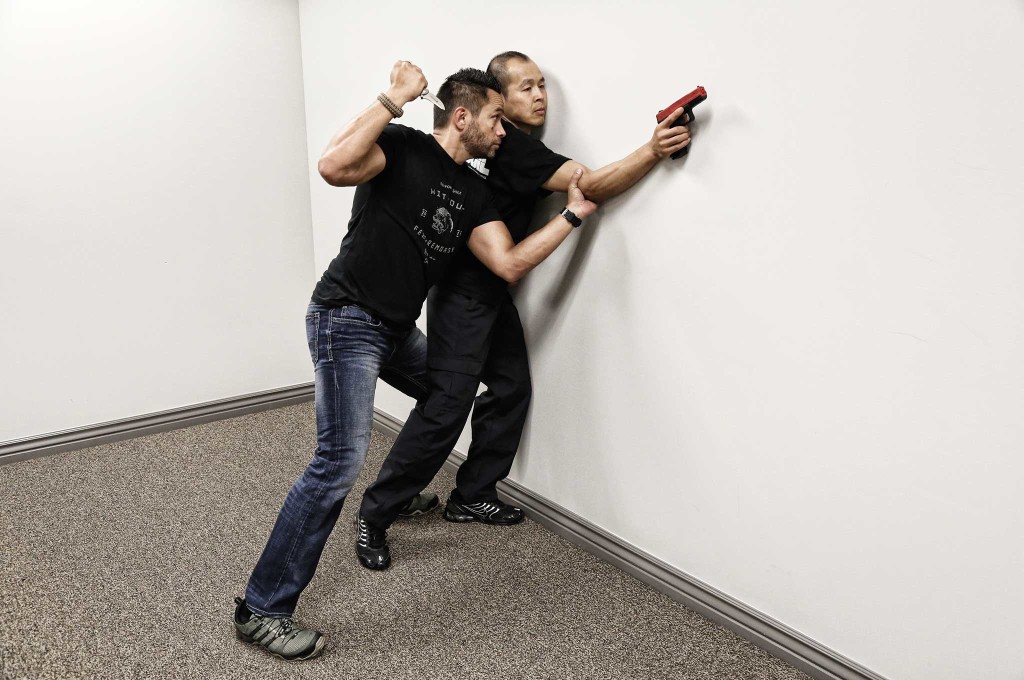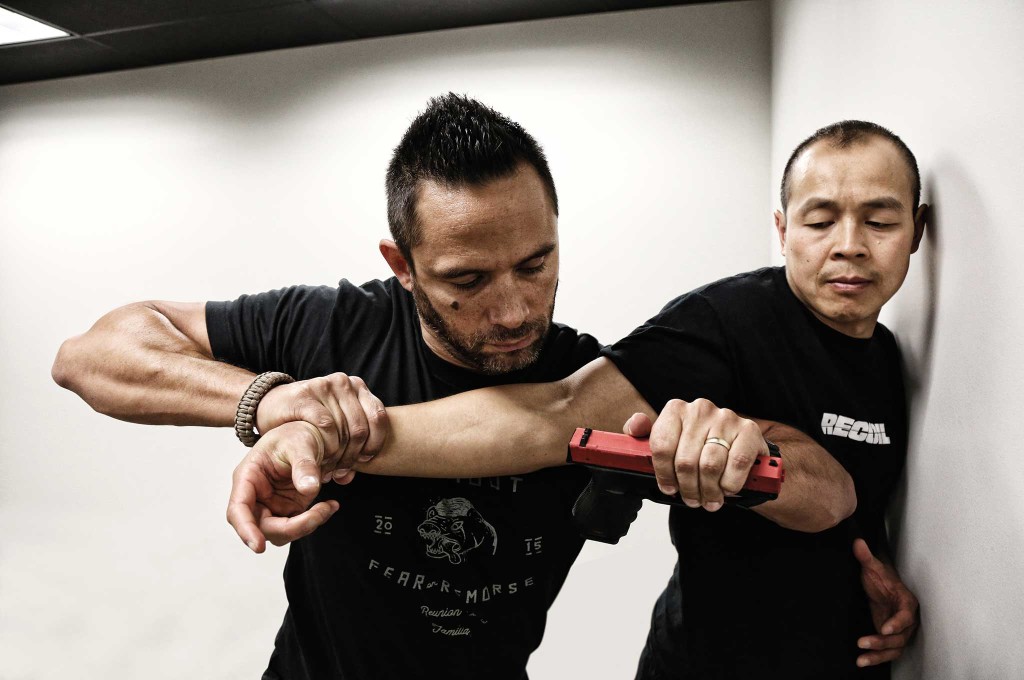RECOIL OFFGRID Survival Using Filipino Self-Defense Tactics for When SHTF
In This Article
Confronting a bad guy armed with muscles and a bad attitude can be scary enough, but what if he also has a weapon? A crowbar, a knife, or a gun? Having to fight off an armed thug regardless of the circumstances is a situation that should be avoided at all costs. However, as the expression goes, hope for the best and prepare for the worst. The real world of self-defense can be chaotic and confusing, and there are many unknowns that you can't always anticipate, such as the presence of weapons. To not only survive, but also win a fight of this nature isn't always easy, but it's very much possible — especially with the principle of Zero Pressure. As a key concept from a style of Filipino martial arts called Pekiti-Tirsia Kali (PTK), Zero Pressure is the intercepting and trapping of an attack is at its weakest point.
Warning!
Warning! The concepts shown here are for illustrative purposes only. Seek a reputable instructor before attempting any techniques discussed or shown in this story.
So what exactly is Zero Pressure in the context of combatives? The range of motion for every attack has a beginning point and an end point. The beginning point is where the arm is positioned before it, say, takes a swing — it's that moment in time when the attack's velocity is zero. That might be where the arm retracts so that it can gain more power in the swing, or a stationary non-retracted position that is harder to see coming because it's not as telegraphed. Then there is the point where the attack reaches the end of its range of motion, and the velocity of the attack again reaches zero velocity. These two positions are components of the principle of Zero Pressure.

There is also a point between beginning and end where the attack will reach its maximum velocity or 100 percent. Obviously, that's the point where your ticket could get punched and should be avoided whenever possible.
There is another part of the attack that can also be measured from zero to 100 percent, and that would be from the shoulder to the tip of the weapon (which could be the muzzle of a gun or it might just be a fist). If you look at the arm and weapon as one measured unit, the further you get from the shoulder, the faster the unit is moving. Maximum velocity or 100 percent will be at the tip of the weapon, and velocity decreases as you get closer to the shoulder. For the intents and purposes of this principle, the shoulder is the pivot point or position zero.
When dealing with weapon-based attacks, there are ultimately two positions that will give me the highest likelihood of saving my bacon. I need to get completely outside of the range of the weapon altogether, or I need to get completely inside the most effective range of the weapon or 100 percent velocity, as close to the assailant's shoulder as possible, position zero. This is a philosophy that many martial arts will describe in different ways, but the analogy I like most is that of a hurricane. The safest places to be in a hurricane are either completely outside the hurricane's wind field, or right in the hurricane's eye.
This concept might even be compared to a pendulum swing. The points of the pendulum where there will be the least kinetic energy are the beginning and end points of a weight's trajectory, and the portion of the swinging cord closest to the pivot point.
If only the reality of self-defense were that simple.
The dynamics of human physical confrontation offer too many variables, and to attain true Zero Pressure one must also employ forward momentum and constant pressure to the weapon-bearing arm. Failure to do so will result in losing control of the arm and allowing the assailant to bring his weapon back into the fight quicker.

Beginning Point of Zero Pressure: Jared Wihongi immediately closes the gap before Conrad Bui (left) can launch his...
For example, if I were successful in jamming or trapping a knife attack, a bad guy could retract his arm and stab again and again until he gets me. However, if I move forward to Zero Pressure, I will reach a point where they cannot retract their arm any further without moving backward, which is why my forward momentum is important so they can't free themselves. Or in the case of a firearm, if I were successful in deflecting and grabbing a thug's arm or the weapon itself, I can keep the muzzle pointed away from me so long as I move forward, but if I stop and he moves backward, his arm will straighten and the muzzle will point at me.
I like to compare it to the military doctrine that is commonly taught with regards to countering a close-range ambush. Moving backward and recoiling away from the ambush will be a liability and put you in a position where you're off balance, on your heels, and unable to achieve or maintain Zero Pressure. You must push forward. Don't be under the illusion that you will always be strong enough to push your opponent backward, the idea is that even if he's pushing you backward, you're able to temporarily immobilize his arm or lock it into a trapped position to prevent further damage while you work toward your next counter tactic.

End Point of Zero Pressure: After talking down his aggressor doesn't work, Jared Wihongi slips out of range of...
So how can you utilize this principle in application? To achieve Zero Pressure, you need to put yourself in the right position. Moving to a point of domination in a combative encounter can mean the difference between going home or going to the morgue. The best position to deliver a counterattack is from the rear, but in most situations this will also be the most difficult position to achieve.
When countering a weapon-based attack, the key is to move to the Outside Line. Outside Line refers to the side of the assailant's lead shoulder that's toward his back and away from his other arm. For example, if the bad guy leads with his right shoulder, you should move to your left so you're on the outside of his right arm and closer to his right shoulder blade, away from his left arm. With a weapon-based attack, you'll want to move to the Outside Line of the weapon-bearing arm.

Jared Wighongi (left) steps to the Outside Line while parrying. In a dominant position, he slams the bad guy against...
Conversely, the Inside Line would be the side closest to your opponent's non-weapon bearing arm. (It's a less desirable position to be in because the bad guy can attack with both arms and legs.)
With the principles of position in mind, Zero Pressure will typically be achieved in one of these three positions, what I like to call Zero Pressure One, Two, or Three.
Zero Pressure One: This position takes place on the Inside Line, where I push the attacker's arm outward and away from his body. This position is normally achieved by jamming the attack as close as possible to its starting point before it gains momentum. This can be a good tactic, but staying in this position too long is less than favorable because of the bad guy's ability to curl his arm inward. This can make things difficult when controlling an assailant's weapon arm. Plus, the close proximity to the assailant's other arm will also give him the additional ability to attack and defend.
Zero Pressure Two: This is more of a central position, where the assailant's elbow is bent and you're pushing the arm into their body.
Zero Pressure Three: This is the preferred position, where you're on the Outside Line and pushing his arm across his body. Plus, you're furthest away from his other arm.
With this concept in mind, it's important to figure out the best way to get to the Outside Line. A common tactic that is taught in Pekiti-Tirsia Kali is forward angular movement toward the Outside Line position, often illustrated with a triangle or “V” motion. This angular movement moves you off line of the attack, while still keeping you close enough to gain control of the weapon-bearing arm. Good balance and foot mobility becomes important so that you can maintain a solid base and dictate distance and proximity.
The key is to move to the Outside Line — but keep in mind that you can't always dictate position. Sometimes objects in the environment or your position when the attack starts may dictate which direction you can realistically move. If the fight ends up on the ground or against a wall, you should look to pin the weapon-bearing limb to the ground, wall, or — in the case of Zero Pressure Two — to the assailant's body. The ideal way to control an arm is with one hand on the tricep, just above the elbow, controlling the upper arm. The other hand should be on the wrist close to the hand, controlling the lower arm. Your hands should be in an over/under grip position to maximize control.
The principle of Zero Pressure is universal in application, meaning it can be applied regardless of the weapon involved, or even to empty-hand assaults for that matter. The key is to immobilize the attacker's weapon-bearing limb just long enough for you to survive, orientate yourself, decide upon a course of action, and do it!
But what are some viable courses of action you might ask? The first thing is to decide whether you must remain engaged with the bad guy and counterattack, or disengage. You can then continue to one of the following options:
Completely disengage from the situation — if it's feasible (it might not be a good idea to disengage and leave your wife and kids behind!)
The concept of Zero Pressure is all about survival. Understanding the concepts of movement, momentum, and position can be integrated into an existing combatives skill set. Whether you're a prepper with only rudimentary self-defense knowledge or someone who trains regularly in a fighting system, it's impossible to prepare for every variable that might be faced in the real world. But fundamental principles like Zero Pressure can be applied to give us a tactical edge — or at the very least help us to not make fatal mistakes when confronted with the situation we can only hope we never have to face.

If you've used Zero Pressure against an armed aggressor, but you can't transition to a weapon of your own,...
Running Backward: You'll never outrun someone who's running forward if you're running backward — plus it causes all kinds of balance problems.
Think That Being Armed Is Being Prepared: Being armed yourself is only half the battle. Training is paramount.
Access a Weapon Too Soon: Think self-preservation first, then look for the opportunity to grab a weapon, whether it's something you're carrying or an improvised weapon.
Staying Unaware: Failing to recognize improvised weapons in your environment could be a fatal mistake.
Block Your Way to Victory: Defensive wounds on the arms are common in weapon-based attacks. Use Zero Pressure and counterattack!
Pekiti-Tirsia Kali is a combat art native to the Negros Occidental area of the Philippines. It was forged through centuries of warfare, both intertribal and international. Like many Asian fighting systems, the art was safeguarded by a particular family and taught to warriors of their tribe. It was first taught to non-Filipinos by Grand Tuhon (master) Leo Tortal Gaje Jr. in 1970s New York, shortly after he moved there from the Philippines. Kali differs from most martial arts in that training begins with weapons (primarily bladed) and then evolves to empty-hand application. The focus on no-nonsense weapon applications has made Filipino fighting arts a hot commodity with military special-operations units around the world, including here in the United States.
Jared Wihongi is founder and president of Survival Edge Tactical Systems Inc., a tactical training and consulting company. He is known to many as the face of Browning's Black Label tactical equipment line. He is one of a handful of master-level (tuhon) instructors in the Filipino combat art of Pekiti-Tirsia Kali and has 15 years of experience in law enforcement. Most of that was spent as a SWAT officer and instructor of firearms and defensive tactics. Plus, he's spent more than a decade teaching combatives and survival skills to police, military, and covert-operations units in Asia, Europe, North America, and South America.
www.facebook.com/jared.wihongi
www.jaredwihongi.com
Pekiti Tirsia Tactical Association
www.teampekiti.com/ptta
The Gun Vault Utah
thegunvaultut.com
Don’t miss essential survival insights—sign up for Recoil Offgrid's free newsletter today.
Read articles from the next issue of Recoil Offgrid: Issue 12
Editor's Note: This article has been modified from its original print version for the web.
 STAY SAFE: Download a Free copy of the OFFGRID Outbreak Issue
STAY SAFE: Download a Free copy of the OFFGRID Outbreak Issue
No Comments